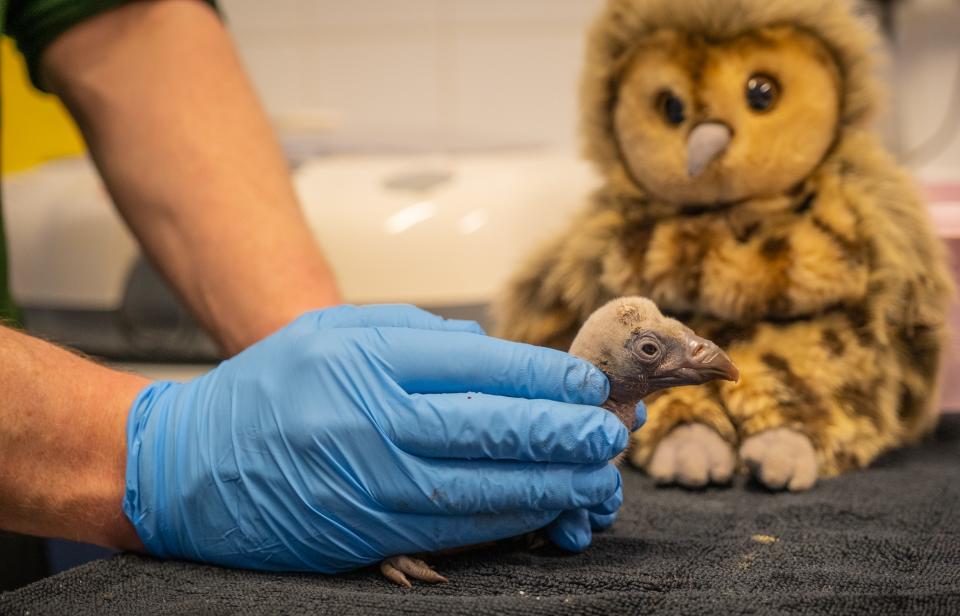London Zoo celebrates arrival of first vulture chick, named Egbert, in 40 years
Zookeepers at London Zoo have celebrated the “brilliant” arrival of a critically endangered vulture chick named Egbert – the first vulture to hatch at the site in more than 40 years.
The fluffy grey Ruppell’s griffon vulture chick weighed in at 115 grams when it hatched – the same weight as a bar of soap – as the birth was captured on camera.
Its mother, Philomena, laid her egg in mid-January but staff were concerned for its survival when previous eggs of hers had failed to hatch.
This prompted staff to keep Egbert in a vulture incubator, tucked in with a squishy bird toy and monitored closely, while a wooden dummy egg was left in Philomena’s nest for her to sit on.

“Since hatch, Egbert has gone from strength to strength and is now weighing a healthy 265g,” said vulture keeper Robert Harland, who was on “eggwatch” when the chick first hatched.
“We’ve been feeding the little one a meaty protein shake of raw quail, mouse and rat meat which will help the chick put on a hefty seven kilograms over its first three months.”
Mr Harland added that the complex hatching process can “take a few days in total”.
“The egg’s membrane starts to dry out, which can restrict its movement and prevent it from surviving the hatch – we saw this happening and knew we had to step in to help,” he said.
Together, the team and colleagues from vulture specialist The Horstmann Trust, who offered guidance via video call, helped Egbert to safety over the course of 40 minutes.

Staff have not yet determined the bird’s sex.
“Once the chick has fledged, the zoo vet team will send a feather off for DNA testing to determine the bird’s sex – male or female,” Mr Harland said.
“The youngster is an important part of the European Breeding Programme for the critically endangered species, a collaborative programme between conservation zoos to ensure a genetically diverse, healthy back-up population of this important species.”
Ruppell’s griffon vultures are the world’s highest-flying birds, documented to have reached heights of 10,973 metres above sea level, and were one of the first animals at London Zoo when it opened almost 200 years ago.

But their population has plummeted in recent years as international conservation charity ZSL worked closely with Saving Asia’s Vultures from Extinction (SAVE) to protect vultures in southern Asia.
In 2006, London Zoo vets flew to Nepal to investigate a spate of vulture deaths and helped successfully campaign for the governments of India, Nepal and Pakistan to ban the manufacture and importation of diclofenac – an anti-inflammatory used widely on cattle but lethal to the vultures who fed on their carcasses.
Mr Harland said: “The ban of diclofenac and introduction of alternative anti-inflammatory meloxicam across Asia’s veterinary sector has since set the population of Asian vultures back on the right track – showing that nature can recover when species are protected.”
“Egbert’s arrival is a brilliant conservation success, and shows the power of conservation zoos to restore and protect threatened species across the world.”

 Yahoo News
Yahoo News 
